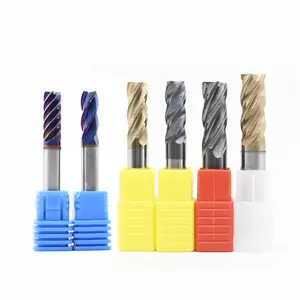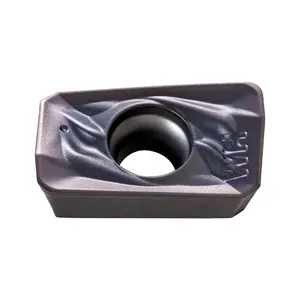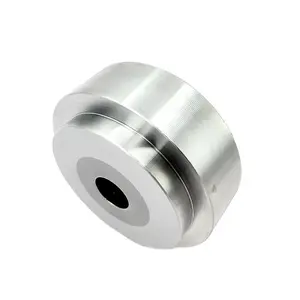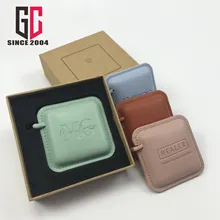What are Cemented Carbide
Cemented carbide is a class of materials widely regarded for its hardness and durability, making it an ideal choice for a variety of tooling and industrial applications. This composite material is typically made by combining tungsten carbide particles with a metallic binder, usually cobalt, giving rise to its exceptional wear resistance and toughness. The process involves pressing and sintering the tungsten carbide and binder powder into a solid mass, which can then be shaped into various forms such as rods, plates, and tips.
Designed to withstand the rigors of cutting, drilling, mining, and machining operations, cemented carbide is an indispensable resource for businesses involved in manufacturing, metalworking, mining, and construction. Its ability to maintain sharpness and integrity under extreme conditions means that tools made from cemented carbide can perform longer and more efficiently than those made from less durable materials.
The working principle behind cemented carbide relies on the synergistic properties of its constituents. Tungsten carbide provides the hardness and wear resistance, while the metallic binder adds toughness and resilience. This combination allows tools made from cemented carbide to cut through hard materials with ease while resisting deformation and fracture.
Types of Cemented Carbide
Cemented carbides are available in various grades that cater to different industrial needs based on their composition and application. Here are some of the prevalent types used across industries:
General Purpose Grades: These are versatile cemented carbides that balance toughness and wear resistance for a wide range of applications. They are commonly used in milling, turning, and other cutting operations on diverse materials.
Submicron Grades: With extremely fine grain sizes, these grades offer superior hardness and edge retention. These properties make them suitable for high-precision machining tasks where surface finish and dimensional accuracy are critical.
Corrosion-Resistant Grades: Containing a higher proportion of binder or alternative binders like nickel, these grades resist corrosive environments and are often chosen for chemical processing or marine engineering applications.
Impact-Resistant Grades: Designed for high-shock applications such as rock drilling or heavy-duty metal forming, these grades have a high binder content which imparts increased toughness.
Wear-Resistant Grades: Containing large volumes of tungsten carbide particles, wear-resistant grades are favored in abrasive environments or where parts are subjected to high wear forces.
How to choose Cemented Carbide
Selecting the right grade of cemented carbide is crucial for ensuring optimal performance and longevity of tools. Considerations should include the nature of the work material, the type of machining operation, desired tool life, and specific environmental conditions such as temperature or potential exposure to chemicals.
For tasks involving hard materials or where precision is paramount, submicron grades may be most appropriate due to their excellent hardness and edge stability.
When machining under normal conditions without extreme wear or impact forces, general-purpose grades often provide an effective balance between performance and cost.
In applications where tools are exposed to corrosive substances or operating in marine settings, corrosion-resistant grades will offer the durability needed to maintain tool integrity.
For operations that involve heavy impact or shock loads such as hammer drills or punches, impact-resistant grades will help prevent premature breakage.
In environments where abrasion is the primary cause of tool wear—like in certain types of milling or earth drilling—wear-resistant grades will extend tool life by resisting material loss.
Best Cemented Carbide on Alibaba.com
Alibaba.com offers an extensive selection of cemented carbides suitable for a vast array of industrial applications. As a global wholesale marketplace connecting suppliers with buyers from over 190 countries, Alibaba.com understands the diverse needs of businesses when it comes to sourcing durable tool parts. The platform's user-generated content filtering system helps buyers navigate through a multitude of options including various forms like rods, blanks, tips, plates, and customized support such as OEM services.
Alibaba.com's commitment to facilitating trade across borders resonates through its inclusive features allowing communication in local languages and mobile-friendly purchasing options. Moreover, services like Trade Assurance provide buyers with payment security until delivery completion. With an impressive range of products listed by verified suppliers and no compromise on quality or reliability standards, Alibaba.com stands as a comprehensive source for businesses seeking cemented carbides tailored to their specific requirements.
Common FAQs for Cemented Carbide
What is cemented carbide made of?
Cemented carbide is a composite material composed of fine particles of tungsten carbide bonded together with a metallic binder, typically cobalt.
How are cemented carbides classified?
Cemented carbides are classified based on their grain size, binder content, and the presence of additional carbides. These classifications determine the material's hardness, toughness, and wear resistance.
What is the difference between tungsten carbide and cemented carbide?
Tungsten carbide is a ceramic material that is extremely hard and wear-resistant on its own. Cemented carbide refers to materials made by combining tungsten carbide particles with a metallic binder, which adds toughness and strength.
Can cemented carbide be used for machining steel?
Yes, cemented carbide is commonly used for machining steel due to its high hardness and ability to maintain a sharp cutting edge even at high temperatures.
How do I select the right grade of cemented carbide for my application?
The selection of the right grade depends on factors like the material being machined, the type of machining operation, the desired surface finish, tool life expectations, and specific working conditions such as temperature and potential chemical exposure.
Why is cemented carbide preferred for cutting tools?
Cemented carbide is preferred for cutting tools because it offers a superior combination of hardness, wear resistance, and toughness compared to other materials, leading to longer tool life and improved productivity.
Can cemented carbide be customized?
Yes, cemented carbide can be customized in various shapes and sizes and can include support options such as OEM (Original Equipment Manufacturer) services to meet specific industry requirements.
Is cemented carbide resistant to corrosion?
Certain grades of cemented carbide are designed with higher binder content or alternative binders like nickel to enhance corrosion resistance in harsh environments.
How does grain size affect the properties of cemented carbide?
The grain size in cemented carbides affects its properties; finer grains generally result in higher hardness and better edge retention while larger grains offer increased toughness.
What are the typical applications for cemented carbide?
Typical applications for cemented carbide include metal cutting, drilling, mining, woodworking, wear parts, and various forms of precision tooling.
Can cemented carbides be recycled?
Yes, cemented carbides can often be recycled. The recycling process involves recovering the tungsten carbide content from scrap tools or parts.
How does binder content affect the performance of cemented carbides?
Binder content influences the performance by affecting the toughness and strength of the material. Higher binder content generally increases toughness but may reduce hardness.
Are there any limitations to using cemented carbides?
The main limitations of using cemented carbides include their brittleness in comparison to steel and their susceptibility to thermal shock which can lead to cracking during heavy interrupted cuts or when coolant is improperly applied.












































 浙公网安备 33010002000092号
浙公网安备 33010002000092号 浙B2-20120091-4
浙B2-20120091-4